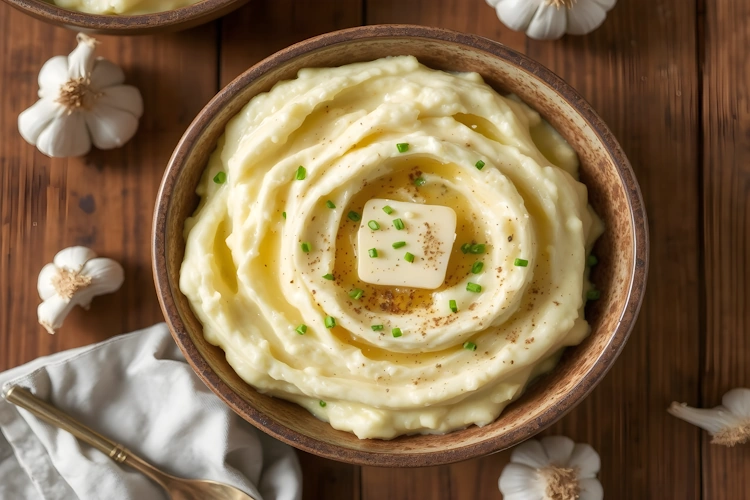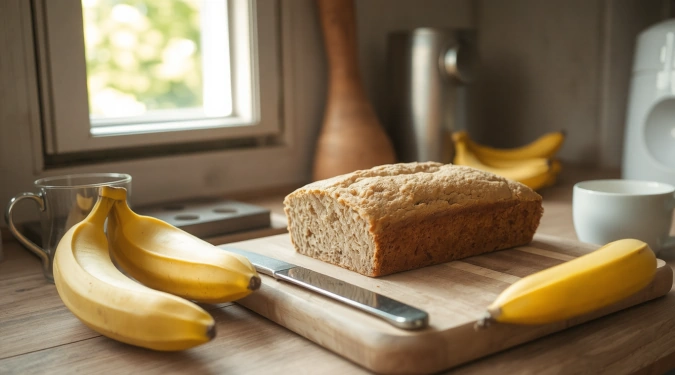Easy Homemade Yogurt Recipes
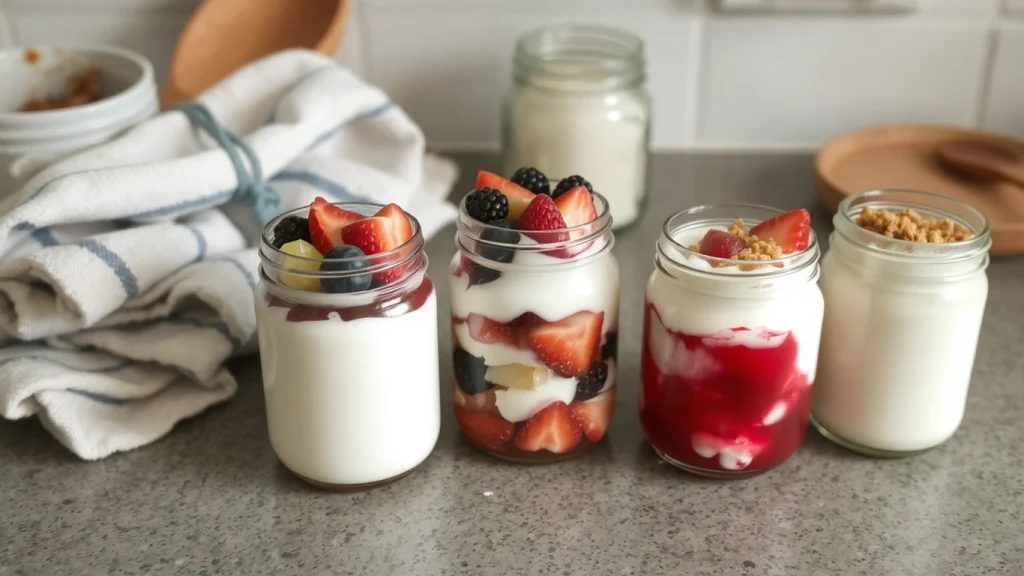
There’s something so satisfying about homemade yogurt. Not only does it taste fresher and creamier than anything you can buy at the store, but making it yourself also gives you full control over the ingredients. Whether you’re looking to add some probiotics to your diet or simply enjoy a healthier alternative to store-bought yogurt, these easy homemade yogurt recipes will quickly become a staple in your kitchen.
Making yogurt at home might seem daunting at first, but once you know the basics, it’s surprisingly easy and rewarding. You don’t need any fancy equipment, just a few simple ingredients, and a little patience. In this guide, I’ll walk you through how to make your own creamy, delicious yogurt right in your own kitchen.
Why You Should Make Homemade Yogurt
Homemade yogurt has several advantages. First, it’s free of preservatives and artificial additives, which are often found in store-bought varieties. Plus, you can adjust the sweetness and flavor to your liking. Want something tangier? Go for a longer fermentation time. Prefer a sweeter yogurt? Just add a bit more honey. The best part is that you can enjoy it knowing exactly what went into it!
Making yogurt at home is also budget-friendly. A batch of homemade yogurt costs a fraction of what you’d spend on premium yogurt brands, and once you have the basic method down, you can easily scale it to make bigger batches.
Basic Homemade Yogurt Recipe
Let’s start with a basic recipe for creamy, tangy yogurt. Once you get the hang of it, you can experiment with different flavors, mix-ins, and toppings.
Ingredients:
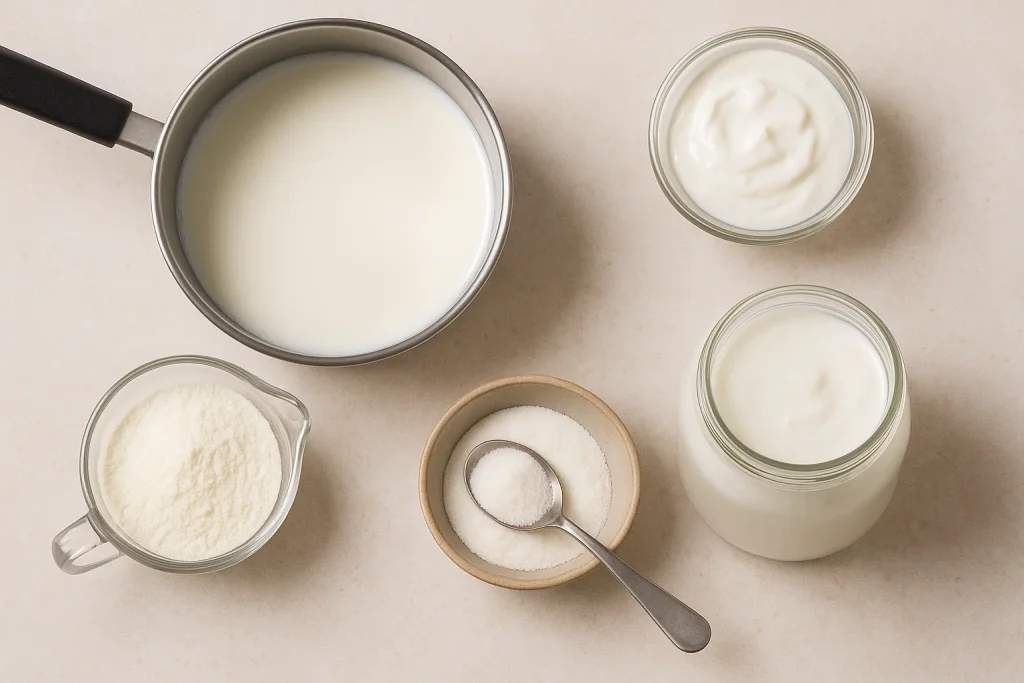
- 4 cups whole milk (or any milk you prefer)
- 2 tablespoons plain yogurt with live cultures (store-bought or from a previous batch)
- 1/4 cup powdered milk (optional, for extra creaminess)
- 2 tablespoons sugar (optional)
Instructions:
Heat the Milk: Pour the milk into a saucepan and heat it over medium heat until it reaches about 180°F (82°C), just below boiling. This step helps to denature the proteins in the milk, which creates a smoother yogurt texture.
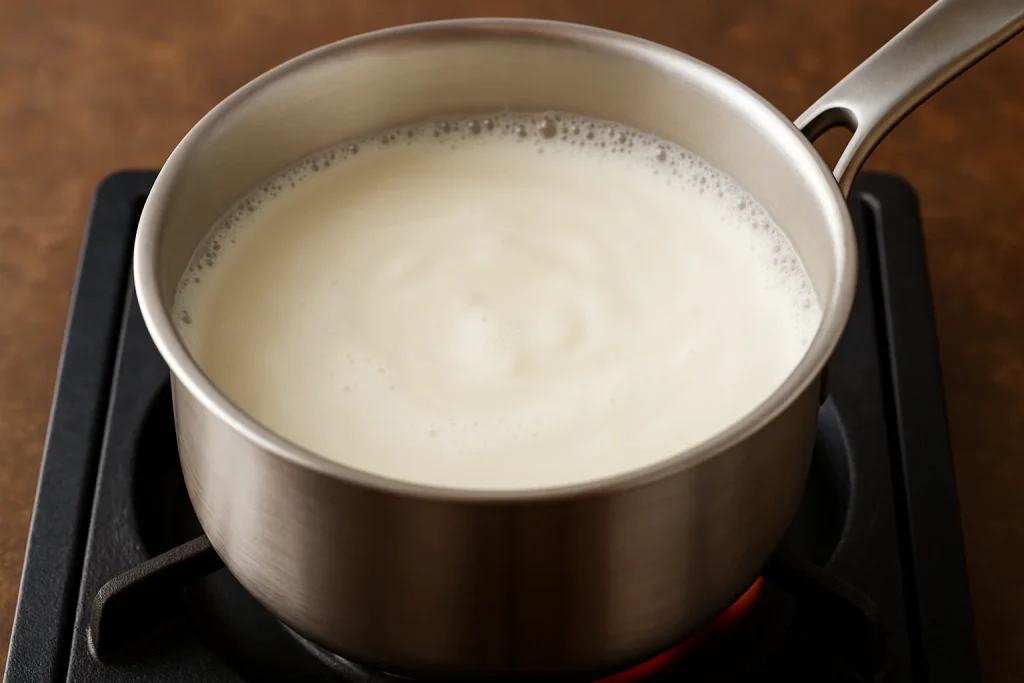
Cool the Milk: Allow the milk to cool to around 110°F (43°C), which is the ideal temperature for the yogurt cultures to grow.

Add the Yogurt Starter: In a small bowl, mix the store-bought yogurt with a few tablespoons of the cooled milk to create a smooth mixture. Then, whisk this back into the pot of cooled milk. This adds the beneficial bacteria needed to turn the milk into yogurt.
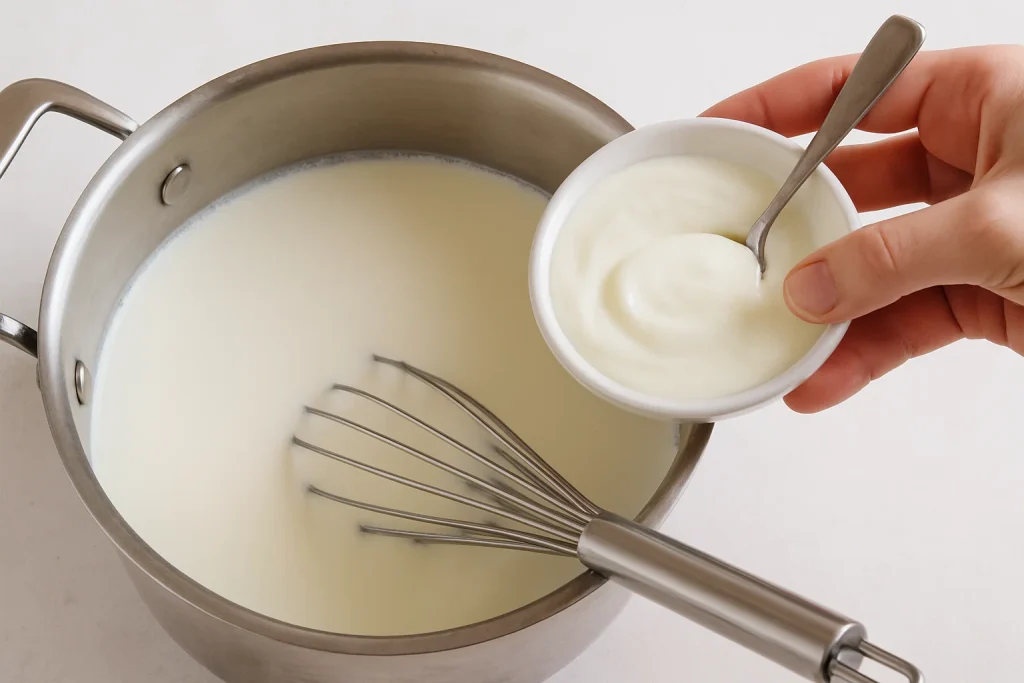
Let It Set: Pour the milk mixture into a clean container or jar. Cover it with a lid or cloth and place it somewhere warm for 4-12 hours. The longer it sits, the tangier the yogurt will be. A turned-off oven with the light on or a warm spot on the counter works great.
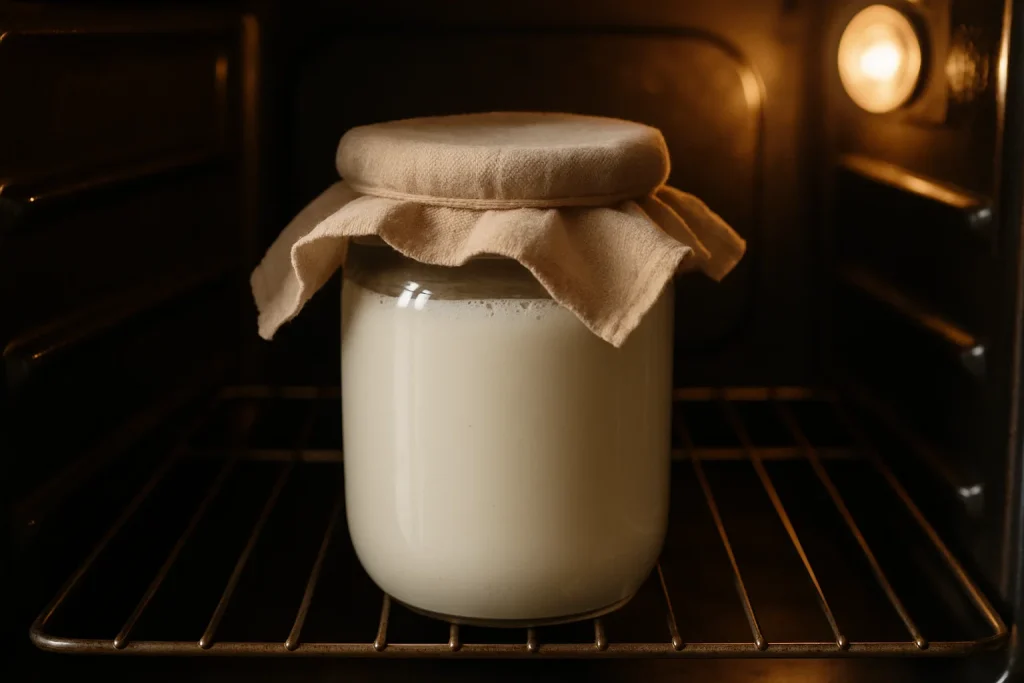
Refrigerate: Once the yogurt has set to your desired thickness, refrigerate it for at least 2 hours. This helps it firm up and improves the texture.
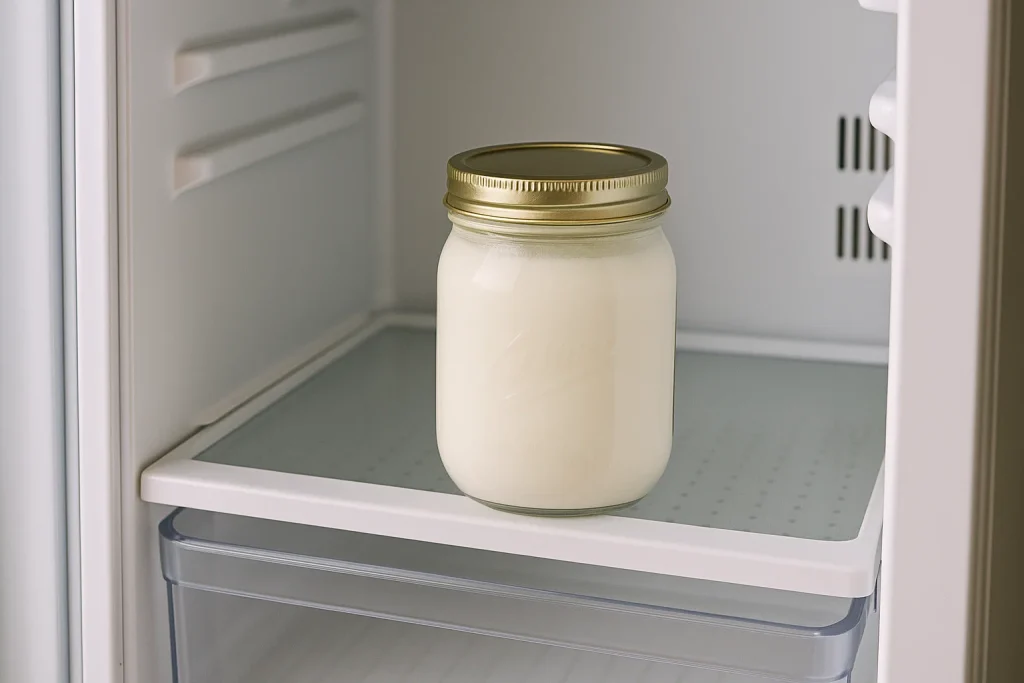
Enjoy: Once chilled, your homemade yogurt is ready to enjoy! Serve it with fresh fruit, a drizzle of honey, or granola for a healthy, satisfying snack or breakfast.
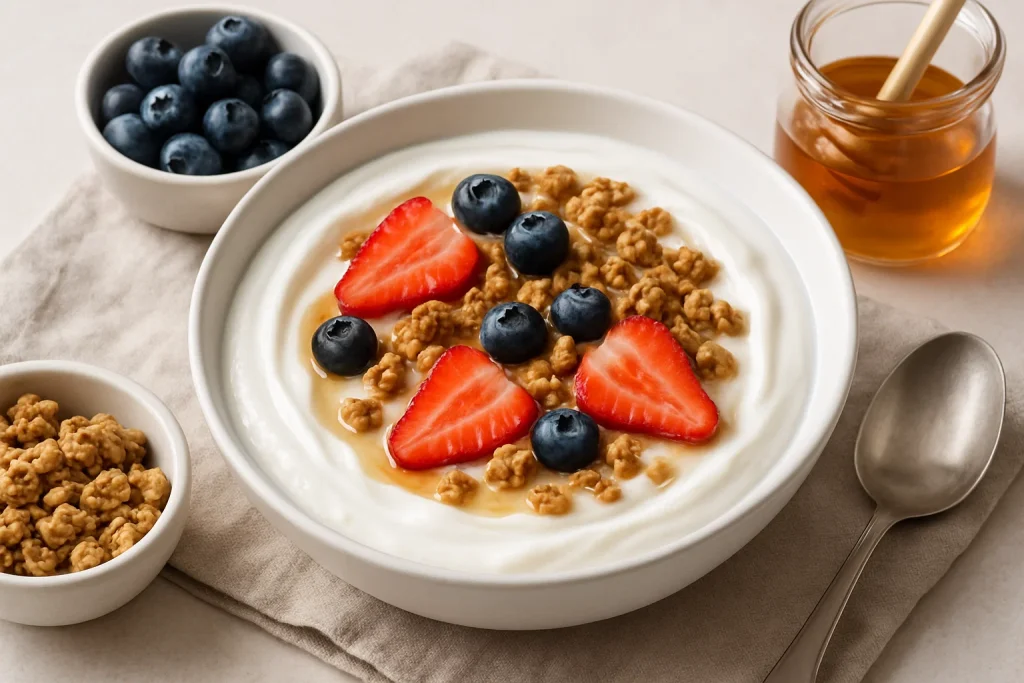
Greek-Style Yogurt
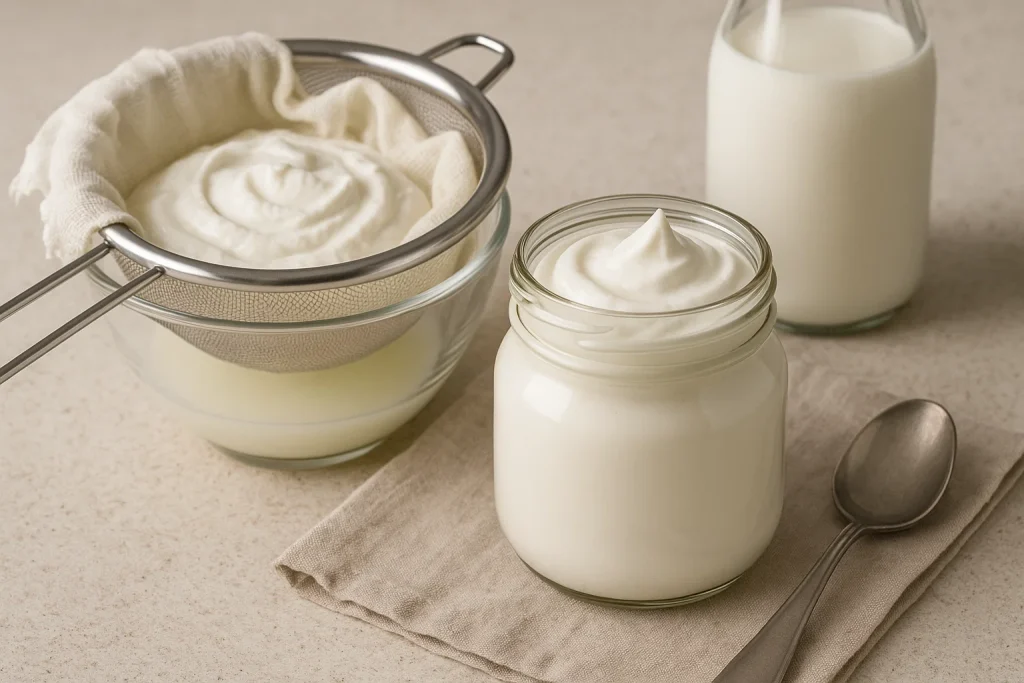
If you love thick, creamy Greek yogurt, you can easily make it at home. Greek yogurt is made by straining regular yogurt to remove some of the whey, creating a thicker texture.
Ingredients:
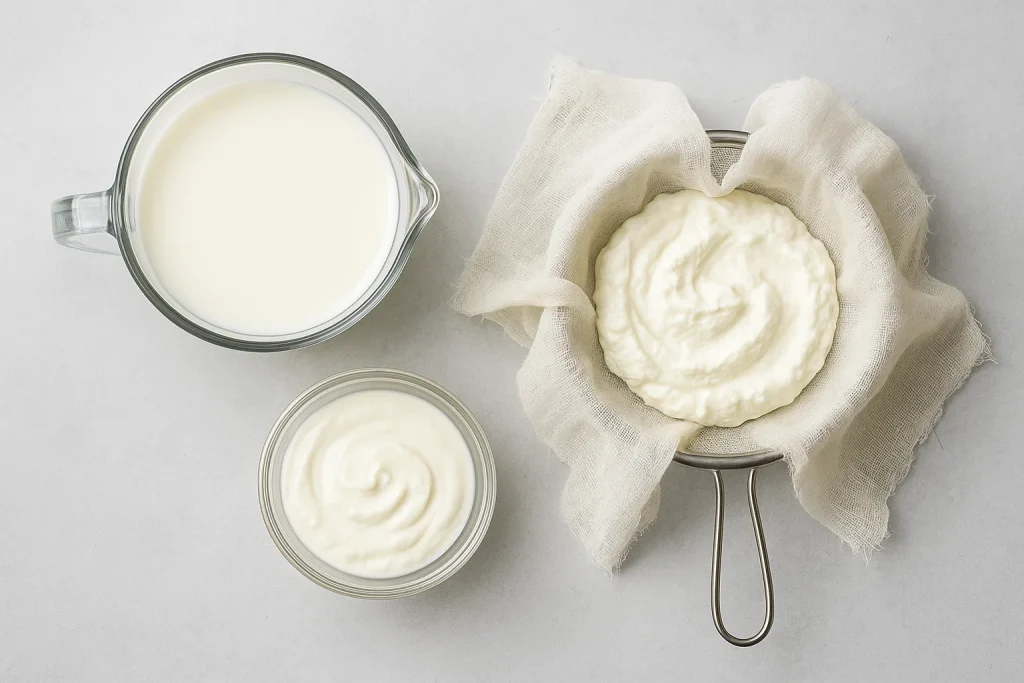
- 4 cups whole milk
- 2 tablespoons plain yogurt with live cultures
- Cheesecloth or a fine mesh strainer
Instructions:
Follow the same process as the basic yogurt recipe to heat and cool the milk and add the yogurt starter.
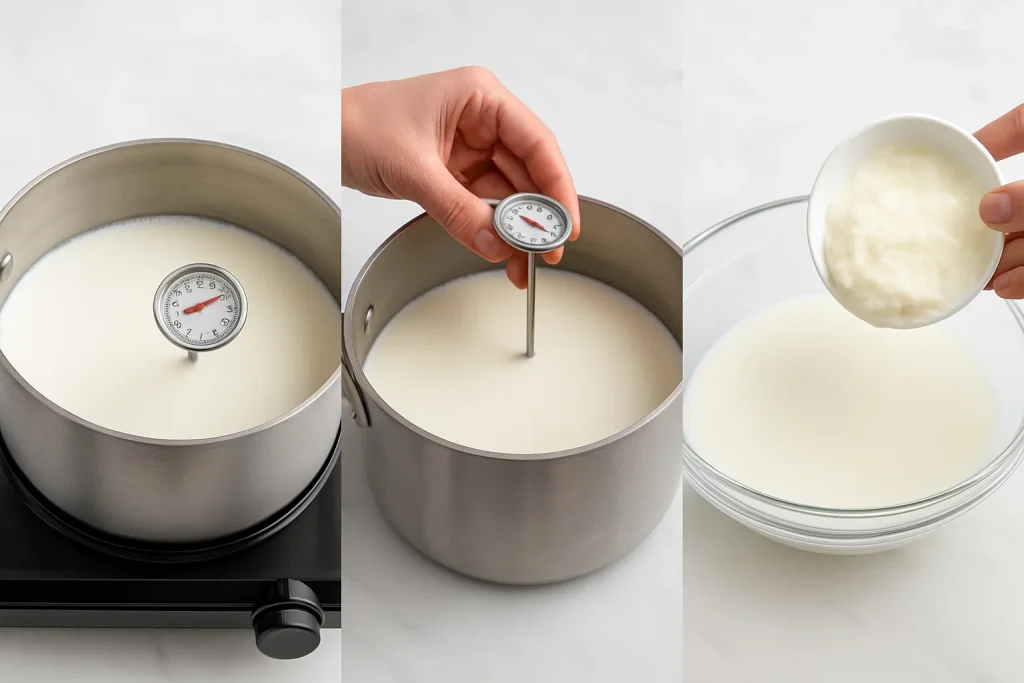
After the yogurt has set and chilled, strain it through cheesecloth or a fine mesh strainer over a bowl for about 1-2 hours. The longer you strain it, the thicker the yogurt will be.
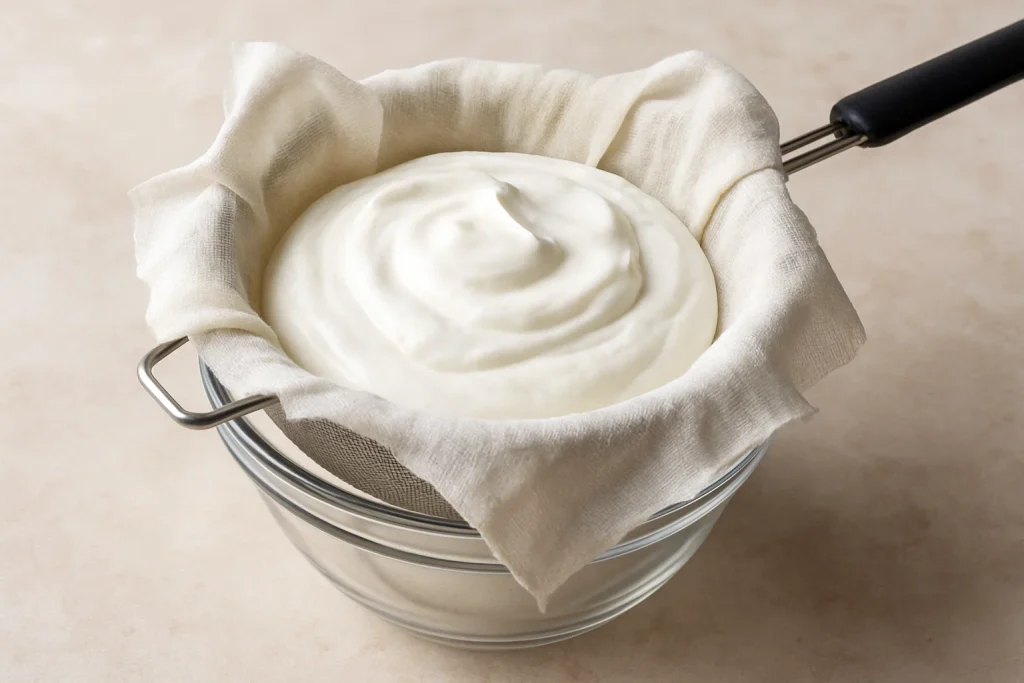
After straining, transfer the thickened yogurt to a jar or container and refrigerate.
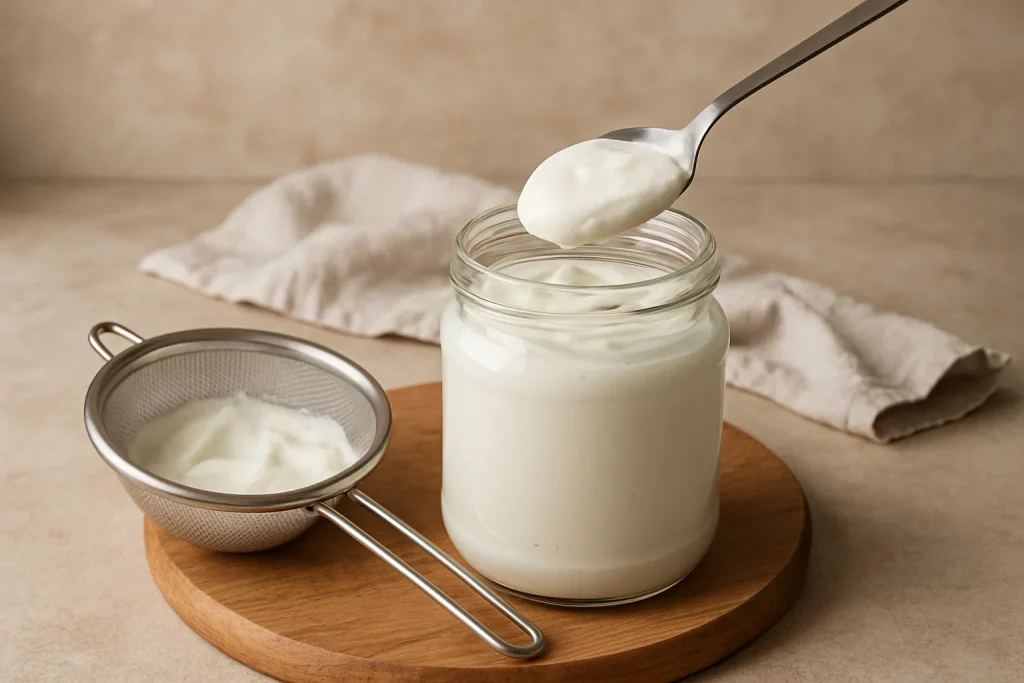
Tip: If you prefer extra creaminess, you can also add a tablespoon of heavy cream to the milk before heating it.
Flavored Homemade Yogurt
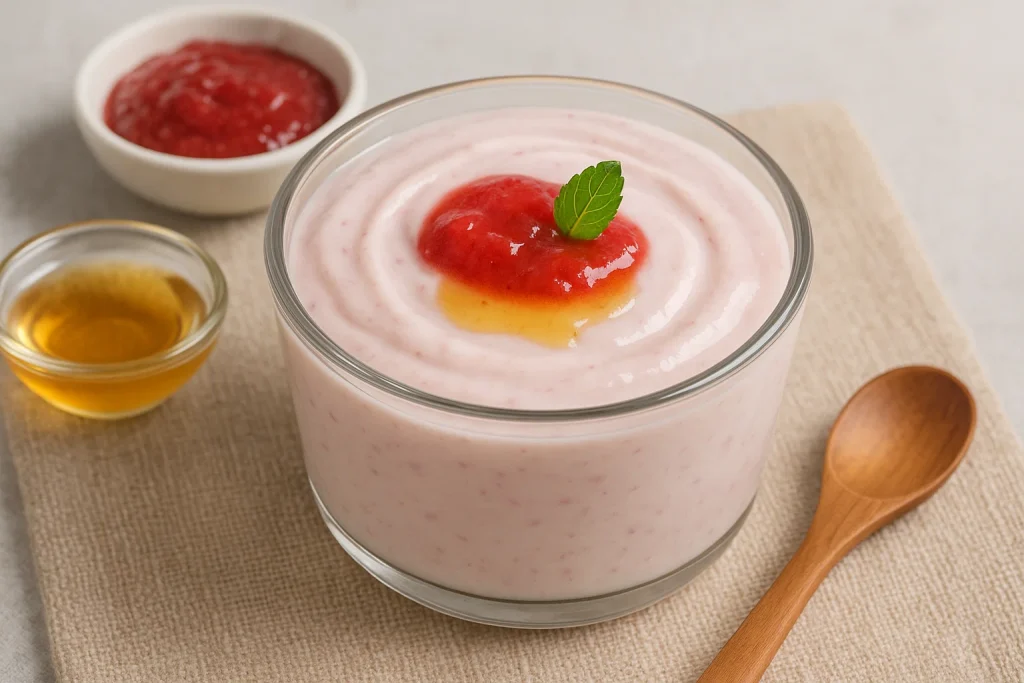
Sometimes, you might want to add some flavor to your yogurt. The possibilities are endless! You can use fresh fruits, extracts, or spices to enhance the flavor.
Ingredients:
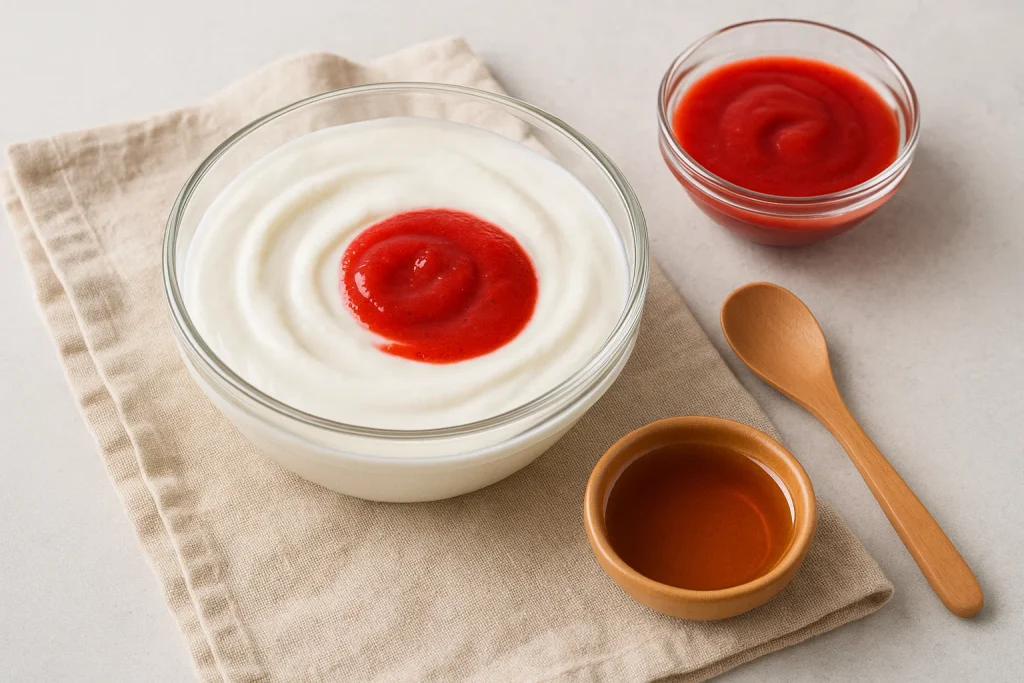
- 4 cups homemade yogurt (either plain or Greek-style)
- 1/4 cup fruit puree (strawberry, mango, blueberry, etc.)
- 2 tablespoons honey or maple syrup (optional)
Instructions:
- Prepare your base yogurt following the instructions above.
- Once your yogurt is set and chilled, mix in fruit puree and sweeten with honey or maple syrup if desired.
- You can also use flavorings like vanilla extract, cinnamon, or even cocoa powder for different variations.
Pro Tip: If you want to keep the yogurt smoother, mix in the fruit puree before the yogurt sets in the fridge.
Why You’ll Love Homemade Yogurt
Making yogurt at home is a game-changer, and I can’t stress enough how satisfying it is to scoop up a jar of fresh, homemade yogurt. It’s creamy, customizable, and free from any artificial ingredients. Plus, it’s incredibly versatile—whether you enjoy it as a breakfast, snack, or even as a topping for desserts, it’s sure to become a regular part of your routine.
The best part is that once you have your first batch, you can use your homemade yogurt as the starter for future batches, making the process even simpler.
A Delicious and Healthy DIY Treat
Making your own yogurt at home is not only easy but also an incredibly rewarding experience. You get to enjoy fresh, creamy yogurt whenever you want, without any added preservatives or sugar. And the best part? You can experiment with different flavors and styles to make it your own. Whether you’re starting with a basic recipe or adding fruits and spices, homemade yogurt is a simple, healthy treat that’s perfect for everyone.
So, next time you’re craving something creamy, tangy, and wholesome, why not skip the store-bought version and try making your own homemade yogurt?

